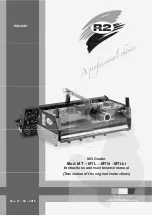
30
Troubleshooting
The troubleshooting table which follows provides simple
troubleshooting procedures which the user may use to restore
normal operation. If normal operation cannot be restored, do
not attempt to check inside any unit. Any repair is best left to a
qualified technician.
Table 2 Troubleshooting table
If…
Then…
power is on but nothing
appears on the display
•
adjust BRILL control.
•
check power cable.
•
check for loosened power connector.
•
check for blown fuse.
nothing appears on the
echo display
•
check that transceiver unit is turned on.
•
check power cable and connector on transceiver unit for tight connection.
•
check fuse on transceiver unit.
echo display is normal
but echo or tide is not
displayed
•
check interconnection cable between transceiver unit and display unit.
color is distorted or
display is too bright/
dark
•
adjust BRILL control.
certain colors are
abnormal or picture
jumps
•
check for magnets near display unit.
•
try turning off and on the power to restore normal picture.
tide vector is not
displayed
•
“TIDE HISTORY” on the MARK menu may be set to “0”.
no echoes are
displayed
•
“ECHO LEVEL SHIFT” on the ECHO menu may be set too narrow.
If ship’s track is not
displayed
•
“TRACK DISPLAY” on the TRK menu may be turned off.
seabed does not
appear on the echo
display
•
“ECHO DEPTH RANGE” on the ECHO menu is set too shallow. Set to
suitable depth, or select AUTO.
•
depth is beyond measurable depth (300 meters).
echo display is
interrupted
•
vessel is in heavy seas or passing over wake of another vessel.
•
marine life may be adhering to the transducer.
tide data is unstable
•
“TIDE AVERAGE” on the AVR menu may be set to “0”.
interference is present
on the display
•
check ground for corrosion.
•
cables of other equipment may be too near transducer cable.








































